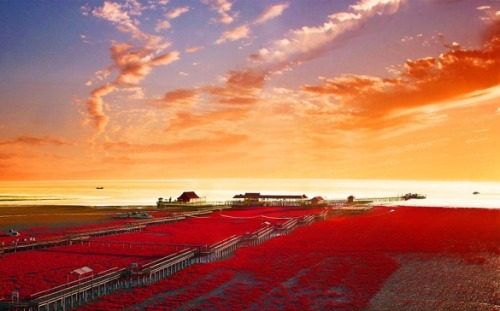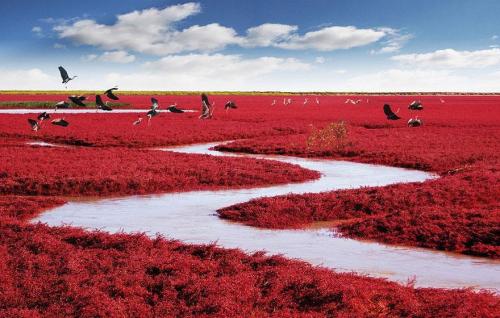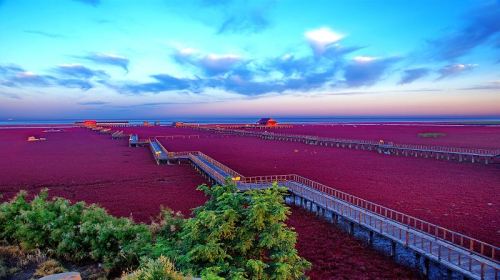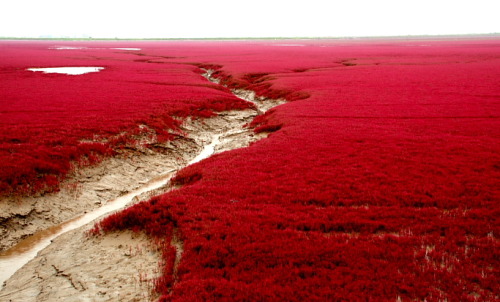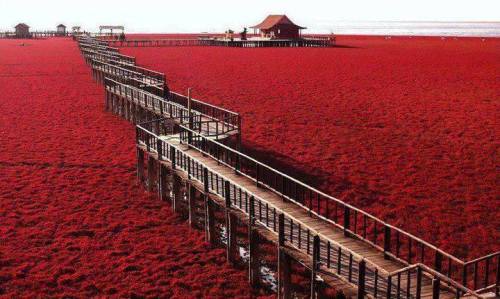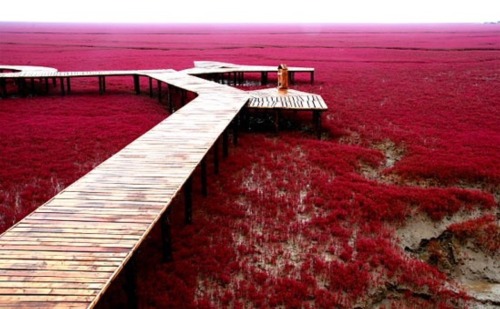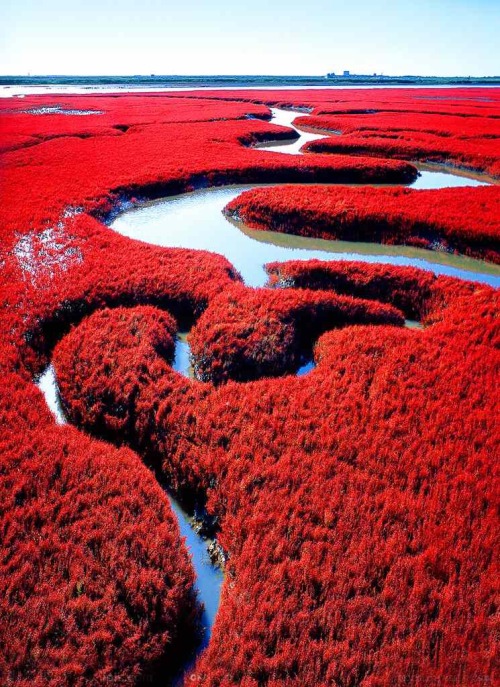#panjin
Red Beach in Panjin, China
Panjin Red Beach in China is not covered in sand at all. The redness is caused by a type of sea weed, Sueda. It starts growing during April and May, then stays green during the summer, but starts turning vividly red in autumn.
The Red Beach is located in the biggest wetland and reed marsh in the world, and actually hosts the most completed ecosystem that can be found: the area has become home to more than 260 kinds of birds and 399 kinds of wild animals. You can find the endangered Crown Cranes and Black Beaked Gulls there, which is why the area is even called home of the cranes. (Source)
Post link
This is the Red Beach “Panjin” located in China. The pictures weren’t edited and are real! The red plants are actually special types of seaweed, which changes from green to red in fall. I guess mother nature surprised us again :)
Post link
The Red Beach is amazing place in China. During the summer months, it looks like any other beach. Buy in the autumn the green sea weed that blankets the entire beach turns red like fire. AMAZING or NOT?
Post link
Suaeda salsa
Suaeda translates from Arabic سويداء into Swaida, a city in Syria where the species Suaeda vermiculata (Source), while salsa means salted.
Family: Amaranthaceae (Amaranth Family)
Fun Fact: “The species is economically important because its fresh branches have high value as a vegetable, and its seed oil is edible and rich in unsaturated fatty acids. Because it can remove salts and heavy metals from saline soils, S. salsa can also be used in the restoration of salinized or contaminated saline land” (Source). However, “[The} Leaves - raw or cooked have a salty flavour. Seed - cooked whole or ground into a powder. A famine food, it is only used when all else fails” (Source).
Habitat: They are endemic to salt marshes, inland saline soils, and intertidal zones of Northern China.
DSCN5870 _ Red Reef Beach, Panjin, China by Matthew Felix Sun
Via Flickr:
Red Reeds (Suaeda) Beach in Panjin, China In September this year, my sister drove me to Panjin, Liaoning Province, from our home city Shenyang, to see the renown Red Reeds (Suaeda) Beach, where the alkali salt deposit made the suaeda grass amazingly red in the fall.
PANJIN,CHINA 03 by REDANTS ZHANG
Via Flickr:
Panjin,china 03







